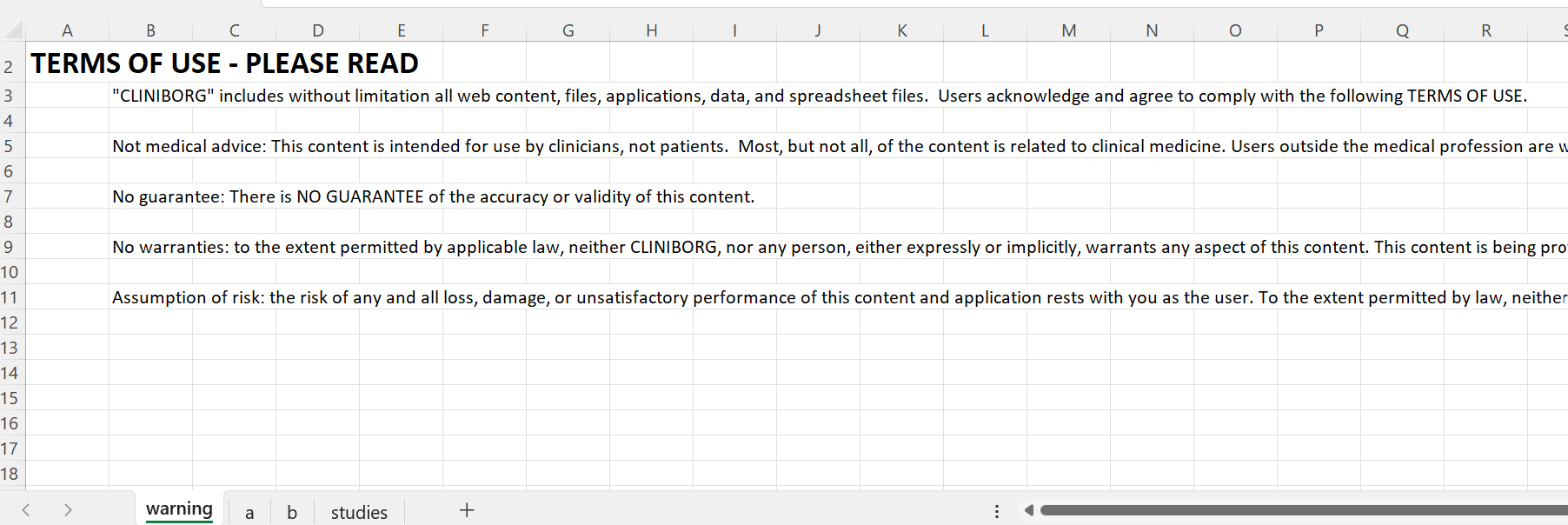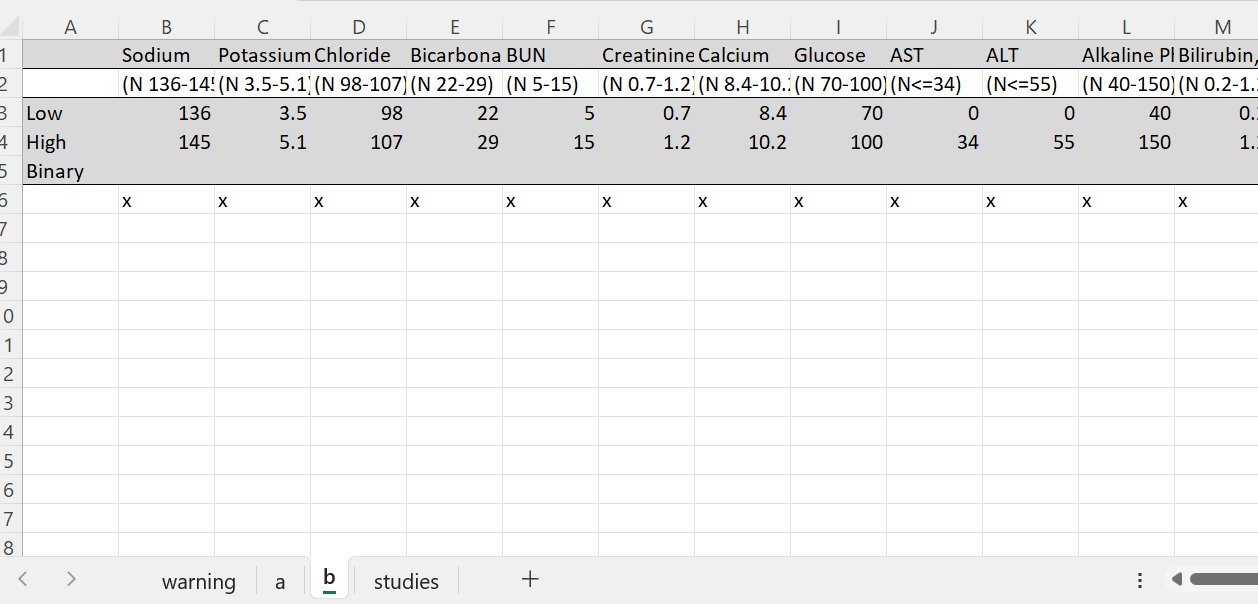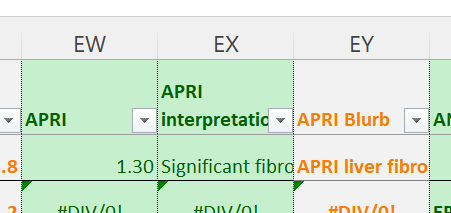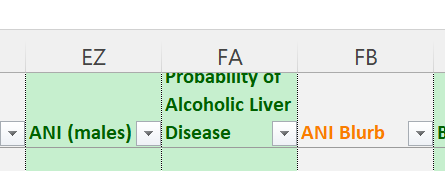Frankenstein
Here are some screenshots of individual components of the Frankenstein spreadsheet.
Below is the opening sheet which has the terms/warning information.

The next sheet (sheet ‘a’) has the list of patients and all of the patient specific information. Below are the demographic items at the left side.

Below is a video demonstration of the entry of the demographic information.
As you move to the right, there are spots for lab entry. Below is a selection of some of these labs.

The labs are connected to the next sheet (sheet ‘b’) and these are set up with normals. The normals that are already there should be considered with caution because they are almost certainly not the exact normal ranges for the patients you’re dealing with. Below is a selection of the existing (not entirely correct) lab normals.

Back to the main sheet (sheet ‘a’) and you move to the right and you’ll see some of the calculated items.
The first calculated item is the corrected calcium. This is seen in the screenshot below.

The next item is the APRI (AST to Platelet Ratio Index) and interpretation. This is seen in the screenshot below.

The next item moving right is the ANI (ALD/NAFLD Index) and interpretation. This is seen in the screenshot below.

Moving further to the right is the ASCVD (Atherosclerotic Cardiovascular Disease) Risk calculation. It is seen in the screenshot below.

Below is a video of the calculation of the APRI and ASCVD risk.
Downloads
The most current version of the excel spreadsheet is here
All versions are below.
February 7, 2024
details about this update are at this post about removing message box warning clutter
January 21, 2024
details about this update are at this post about lifetime ASCVD risk, this post about 10-year ASCVD risk, and this post about custom functions in general.
December 23, 2023
this was the starting point.